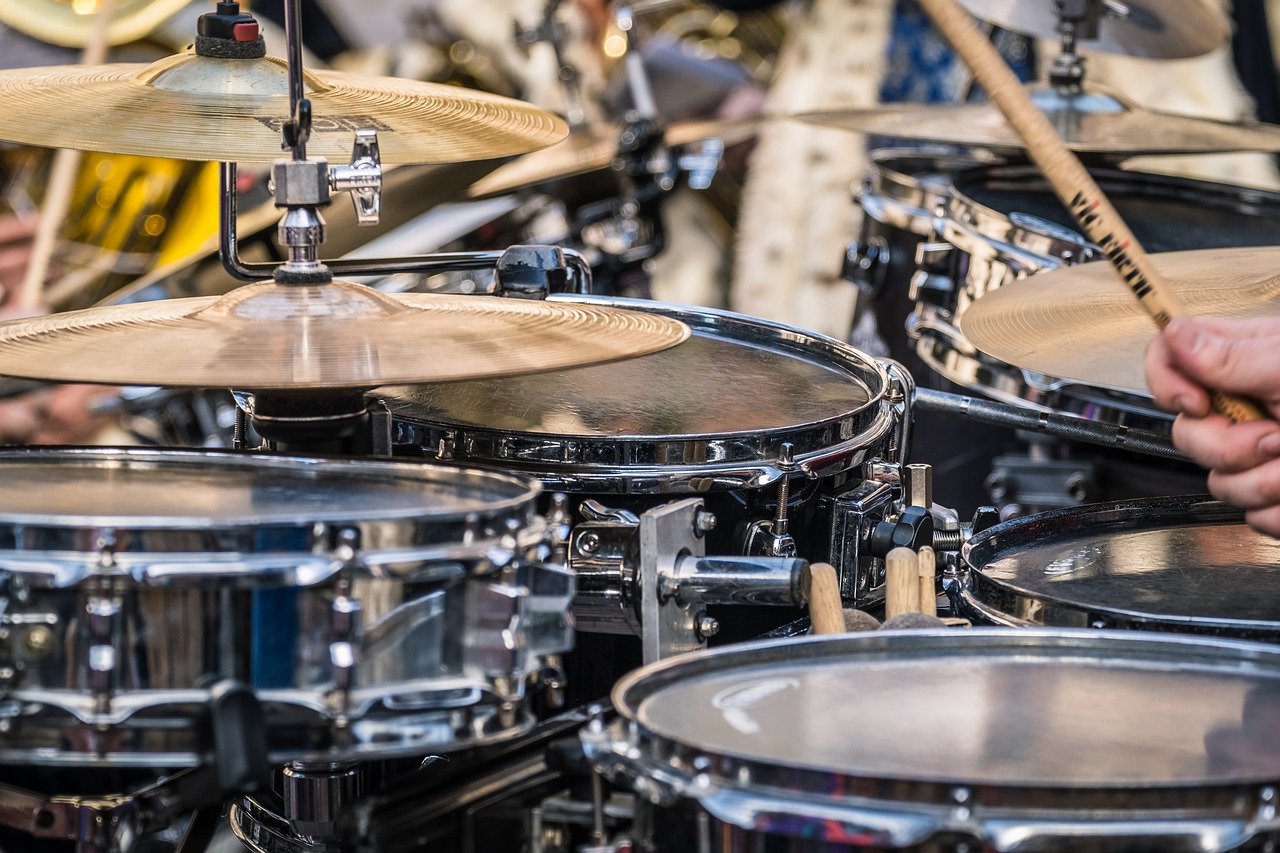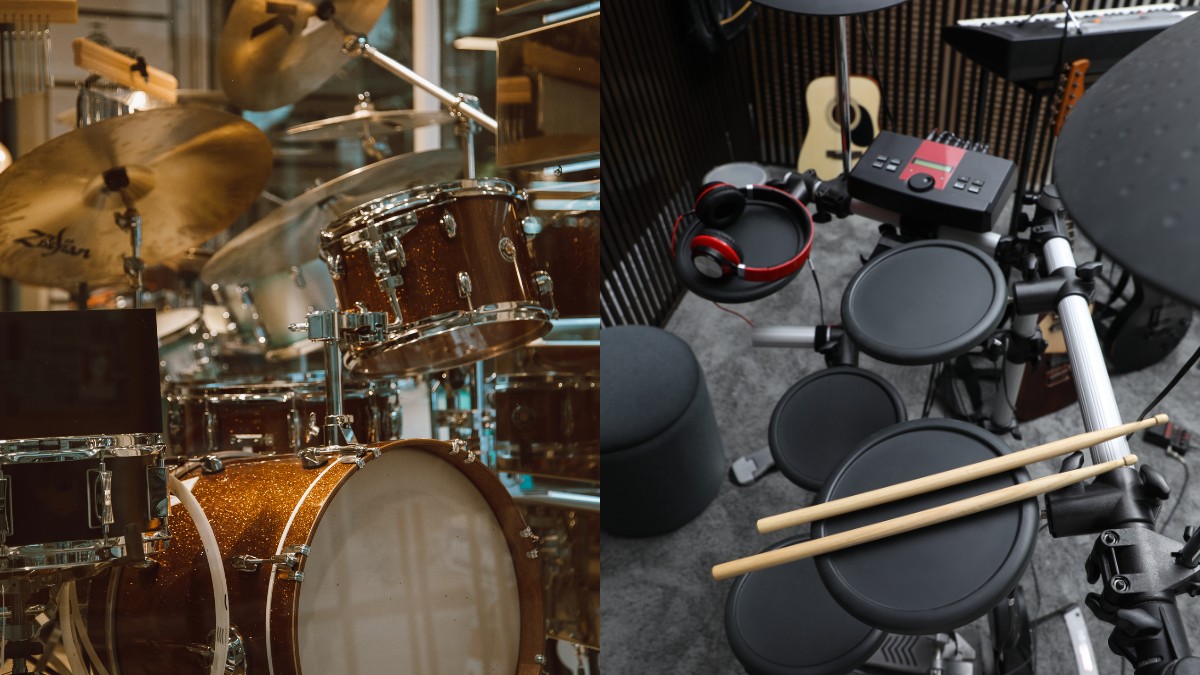10 Essential Drumming Techniques for all Drummers

In this article, we present a list of fundamental drumming techniques and concepts that should be a part of every drummer’s skillset.
They will equip you with solid form and technique and play an integral role in transforming you into a gig-ready drummer.
Contents
1. Correct Grip
The correct grip denotes the right way to hold the drumsticks to gain the maximum bounce and control in your playing. Proper grip accommodates power and agility in your strokes while remaining efficient.
Many self-taught drummers hit an intermediate stage in their career only to realize that they didn’t pay sufficient attention to the most basic concepts of stick grip. At that point, it can be a frustrating endeavor to unlearn bad habits and correct your technique.
The three common variations of the grip are 1) The German matched grip, 2) French grip, and 3) traditional grip. Most drummers choose some sort of matched grip (where both hands use the same type of grip).
Check out our article on how to hold drumsticks for more information.
2. Mastering the 4 Essential Rudiments
The single stroke, double stroke, paradiddle, and flam stoke are the key rudiments to master before you move on to the larger list of 40 rudiments.
This will assist in building solid wrist technique, stamina, and control. We wrote a useful article on these four essential rudiments, which are worth studying.
3. Controlled Stick Bounce
Controlled bounce refers to the ability to control the rebounding stick to improve your efficiency and speed while playing beats and fills.
As the stick hits the drum head it will have a natural rebound. You need to learn to use this rebound to let it ‘spring’ up and push it back down and repeat.
The trick is to never ‘pull up’ the stick but only to push it down and let the rebound do the other half. This requires a very delicate grip that holds the stick just tight enough to not let it slip from your hands. The Moeller method can really help to build your stick control and hand speed but we’ll get to that.
4. Push-pull technique
First, the wrist, then finger; and wrist, then finger… This is great for playing proper double-stroke rolls.
The push-pull works by striking the drum using your wrist and then as the rebound causes it to come up, you keep your wrist bent (resting position) and push it down again using the fingers. And, repeat!
This alternating of wrist and fingers helps you switch between muscle groups to save energy and play faster. It can be applied to double strokes, rudiments, fills, and grooves.
It makes it easy and efficient to play blast beats and speedy rolls with good control. Many drummers also use this as a part of their warm-up routine because it serves the dual purpose of loosening the wrist and finger.
5. Moeller Technique
The moeller technique also called the whipping motion, is inspired by the Civil War drummers of the 19th century and compiled into a book called ‘The Art of Snare Drumming’ by Sanford Moeller.
If you have never tried this technique before, you might be shocked at how efficient it can make you.
Moeller later went on to teach Jim Chapin this technique and it has since found favor among many drummers. The gist of this technique is to find a fulcrum point for your grip and use the ideal bounce you get from it for subsequent strokes.
This means you need to pinpoint an intersection of the perfect balance of the drumstick and your ability to control the sticks. The Moller technique is often described as a ‘waving’ or ‘whipping’ motion applied.
It has a series of exercises that apply it to the four fundamental strokes – up, down, full, and tap.
6. Foot technique – Heel-down v/s Heel-up
Drummers tend to get caught up in stick work and rudiments and often ignore bass drum technique. Your dominant foot should be equally capable in the heel-down and heel-up position to gain independence and foot control.
In the heel-down technique, your foot is fully planted on the kick pedal and you only raise the front part of it to play the kick. This is a much better way to play gentle and measured grooves.
It gives you more resonance and allows the beater to rebound naturally off the bass drum head. The main drawback of heel-up playing is that it forces your shin muscle to do all the work and fatigue is bound to set in after a while.
This technique is popular among Jazz drummers. It is helpful when you play small gigs at a coffeehouse or unplugged jams but may not be ideal for rock or other loud genres.
The heel-up bass drum technique involves keeping your heel slightly elevated so that you only press down with the ball of your foot. This is more assertive and loud. It can help you really ‘dig into the head’ with the beater.
This is popular among rock and metal drummers, especially double bass pedal users. It is less tiring than the heel-down technique but you may find the overall sound muffled. Most heel-up drummers prefer a higher drum throne setting to get the right angle for their thighs.
7. Ghost notes
Haven’t you seen all the “x” markings in the drum notations of really cool grooves? A ghost note on the drums is like playing a muted note on the guitar. It is a note that has rhythmic value but low volume. It just means you play a note very softly compared to your backbeat.
These are ‘in-between’ notes that are inserted to create syncopation oomph that is the heart of dynamics and soul of funk drumming. This is definitely a technique that should be high on your priority list because the ability to play ghost notes is what separates the pros from the novices. Your drumming can never be supernatural unless people see you nail those ghost notes!
8. Open-handed drumming
Open-handed drumming is an alternative to the traditional style of close-handed drumming. The style has remained popular ever since the first wave of open drummers hit the scene in the late 60s. In this guide, we examine its axiomatic traits and list out the pros and cons of this style/technique.
You don’t need to use this technique exclusively. It can be a valuable tool to expand your repertoire, in addition to closed-handed drumming. It can be a blessing for left-handed drummers looking for a middle ground.
All drummers can broaden their creativity and gain ambidexterity (limb independence) by making this a regular part of their practice routine. Check out our detailed article on open-handed drumming for more info.
9. Polyrhythm and Syncopation
Musically speaking, Syncopation refers to a disturbance of regular rhythm flow. Basically, you deviate from the regular rhythm that the audience is expecting by omitting beats or accenting beats dynamically.
This is one of those concepts that are easier to demonstrate than to articulate verbally. You can also refer to Ted Reed’s book – Progressive Steps to Syncopation – to master this technique.
Polyrhythm refers to playing multiple (two) rhythms simultaneously. You can use polyrhythm for a small piece in a song or for the entire song; in which case it will be called a cross-rhythm.
African, Afro-Cuban, Latin, and Indian konnakol are often used as inspiration to come up with crazy syncopations and polyrhythms. Jazz drummers played a big role in popularizing polyrhythms in the West. Today it is found in every genre from metal to fusion to rock.
You can activate split-screen and open our detailed article on it here and poly-read-em.
10. 4-way Independence
Our daily routine includes playing with one hand on the ride, another on the snare, one foot playing the kick while the other controls the hi-hats. Drummers need way more limb coordination than any other musician. Now factor in that a drummer has to read notation while doing this and occasionally wipe the sweat off his face with his sleeve.
Limb independence will eventually allow you to play more complex polyrhythms without getting entangled in conscious counting. It is also an important skill most Latin and jazz drummers possess. Sadly, there is no shortcut.
The best way to build independence is to grind it out on your kit. This can take months or years and there will always be room for improvement.
The best approach is to observe your drumming, isolate problem areas, and work on them specifically.
Start simple by breaking them into smaller units, and move on to more complex exercises as you progress. You can get yourself a copy of Marco Minnemann’s Extreme Independence and Marvin Digren’s 4-way Coordination to get some excellent ideas and exercises.
11. John Bonham Triplets (Bonus Tip)
Ok, it’s not an absolutely essential tip, but John Bonham Triplets are very fun to play.
If you don’t already know who John Bonham is you are pretty dazed and confused. Sometime in the 1960s, Bonham decided that drumming should be all about triplets. Inspired by buddy rich and Gene Krupa, he turned his penchant for triplets into an ability to employ them in ridiculously tasty patterns while flying all over the kit.
This aspect of his playing was labeled ‘Bonham Triplets’ and has since inspired drummers over the past few decades to emulate his signature licks and apply them to various genres and musical contexts.
Conclusion
Drum techniques are always evolving and will continue to do so even in the distant future. Stay on top of your game by keeping an eye out for new developments, skills, and gadgets emerging from the industry. Drum soloing techniques should be a big part of your practice routine if you want to survive this cruel world where drum solos are extinct.
Having a music degree will help you stay ahead of the curve, but nothing beats good old practice. The more you practice, the better your technique.
From very basic to more advanced, all you need to do is put in the work.
This concludes the list of the most essential drumming techniques.







